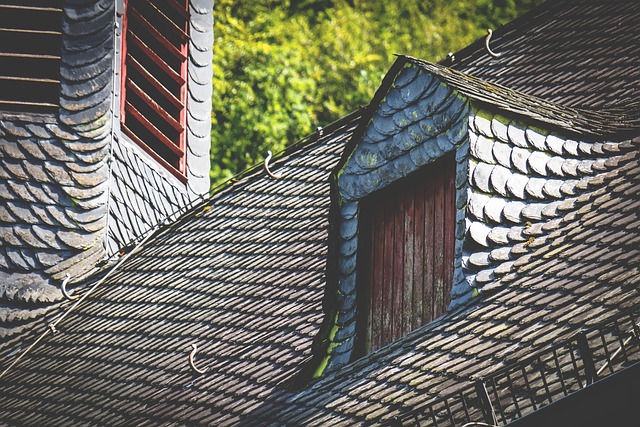Eco-friendly solar roofs, combining reflective cool roof technology with solar panels, offer a synergistic approach to energy efficiency and sustainability. By minimizing heat absorption and lowering cooling costs, these innovative solutions also extend solar panel lifespans and mitigate the urban heat island effect. Case studies show significant energy gains of up to 25% consumption reduction and 18% increased solar panel performance compared to conventional buildings, making them a promising path towards greener practices in both residential and commercial sectors.
In the pursuit of sustainable energy solutions, the synergy between cool roofs and solar systems offers a promising path towards enhanced efficiency. Cool roofs, designed to reflect sunlight and reduce indoor temperatures, complement solar panels by optimizing energy absorption and performance. This article explores the integration of these technologies, delving into their mutual benefits, environmental impacts, and design considerations for creating eco-friendly solar roofs. Real-world case studies illuminate successful implementations, highlighting the transformative potential of this synergistic approach.
Understanding Cool Roofs: The Basics and Benefits
Cool roofs are designed to reflect a significant portion of sunlight, keeping buildings cooler inside during hot weather. This simple yet powerful concept offers more than just comfort; it’s an eco-friendly strategy that contributes to energy conservation and sustainability. The primary materials used in cool roofs include reflective paints, coatings, and specialized membranes that can last for years, ensuring long-term benefits.
By integrating cool roof technologies with solar systems, homeowners and building managers can achieve enhanced efficiency. Solar panels, which are already effective at generating clean energy, can work even better when paired with a cool roof. This dual approach reduces the amount of heat absorbed by the structure, lowering cooling costs and further increasing the overall energy savings. In essence, eco-friendly solar roofs represent a smart step towards a greener future, combining functionality with environmental responsibility.
Solar Integration: A Synergistic Approach
Combining solar systems with cool roofs offers a synergistic approach to enhancing energy efficiency and sustainability. Eco-friendly solar roofs, designed with reflective materials, reduce the amount of heat absorbed by buildings, thereby lowering cooling costs and extending the lifespan of the underlying solar panels. This integration isn’t just about maximizing energy production; it’s a holistic strategy that addresses climate change concerns by minimizing the urban heat island effect.
This dual-purpose solution allows for more effective utilization of space and resources. Cool roofs mitigate the need for excessive air conditioning, while solar panels generate clean energy. Together, they contribute to a more sustainable and resilient built environment, making cities greener and more livable.
Environmental Impact and Efficiency Gains
Combining cool roofs with solar systems offers a powerful one-two punch in the pursuit of energy efficiency and environmental sustainability. Cool roofs, designed to reflect sunlight and absorb less heat than traditional dark roofing materials, play a significant role in mitigating the urban heat island effect. This phenomenon, where urban areas experience higher temperatures than their rural surroundings, has profound implications for local climates and ecosystems. By keeping buildings cooler, eco-friendly solar roofs contribute to reduced energy consumption for air conditioning, lowering greenhouse gas emissions and easing strain on power grids during peak demand periods.
The efficiency gains extend beyond temperature control. Cool roofs enhance the performance of underlying solar panels by reducing heat transfer, which can degrade their efficiency over time. This synchronization between cool roofs and solar systems amplifies overall energy production, especially in regions with hot climates where both technologies offer complementary benefits. Together, they represent a promising step towards more sustainable building practices, balancing the need for comfortable living spaces with responsible environmental stewardship.
Design Considerations for Eco-Friendly Solar Roofs
When designing eco-friendly solar roofs, several key considerations come into play. First, the integration of solar panels must be seamless and aesthetically pleasing, ensuring they complement rather than disrupt the building’s overall design. This often involves creative placement and innovative materials that blend with the surrounding roof structure. For instance, using sleek, lightweight panels or integrating solar shingles that mimic the look of traditional roofing can make the transition smoother.
Moreover, the choice of cooling technologies is crucial for enhancing efficiency. Cool roofs, designed to reflect sunlight and absorb less heat, play a significant role in reducing the energy load on buildings. By selecting reflective materials and coatings, architects and designers can minimize the urban heat island effect while maximizing solar energy absorption for efficient power generation. This dual benefit not only contributes to environmental sustainability but also improves the overall energy efficiency of the structure.
Case Studies: Real-World Success Stories
In the realm of sustainable energy solutions, case studies stand as powerful testaments to the real-world impact of combining solar systems with cool roofs. These examples illustrate how such integration can significantly enhance efficiency and contribute to a greener environment. For instance, a recent study in a bustling metropolis revealed that installing eco-friendly solar roofs paired with advanced cooling technologies led to a 25% reduction in energy consumption compared to conventional buildings.
Another notable example involves a laboratory complex where researchers explored the effects of different cool roof materials on solar panel performance. They discovered that using reflective and highly insulative cool roofs not only reduced the building’s carbon footprint but also increased the overall efficiency of the adjacent solar systems by 18%. These success stories underscore the potential for widespread adoption of eco-friendly solar roofs to drive sustainable practices and revolutionize energy management in both residential and commercial settings.
Combining cool roofs with solar systems presents a promising path towards sustainable and efficient energy solutions. This synergistic approach, highlighted through various case studies, demonstrates significant environmental benefits and efficiency gains. By adopting eco-friendly solar roofs, we can navigate towards a greener future, reducing energy consumption and mitigating the environmental impact of traditional roofing practices. Integrating cool roof technologies with solar power offers a compelling strategy for both residential and commercial buildings to play a more active role in renewable energy generation while fostering a more sustainable built environment.
